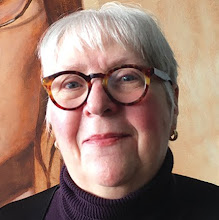Watching the evolution
proceeding in my viewfinder...
and pondering...
with help from this:
The leaves of the oaks are like the leather of bookbinding. How to speak otherwise of them, when in October they take on a brown hue and are as if leathery, ready to be set with gold. Why this excessive poverty of language any time we deal with colours? What do we have at our disposal when we try to name the splendor of colours? Some leaves are yellow, some red, and is that all? But there are also yellow-red, and flame-red, and bull’s blood-red (why this recourse to comparisons?). And birches. Their leaves are like small, pale-yellow coins, sparsely attached to twigs which are of what hue? Lilac, from the lilacs, and violet, from the violet (again, these unwieldy comparisons). How does the yellow of birch leaves differ from the yellow of aspens, underlaid with copper, stronger and stronger, till copper wins. A copper colour? Again a thing, copper. And probably only green and yellow are deeply rooted in the language, for blue the etymologists associate with flavus, yellow, while red again, in its old Norse forms, goes back to trees, the rowan or reynir, the mountain ash, or perhaps to rust. Is the language so resistant because our eyes are not very attentive to details of nature unless they serve a practical purpose? In October, pumpkins ripen in the fields and their colour is orange. Why this recourse to orange, how many eyes saw oranges in a northern country?
I put all this down, for I have encountered difficulty in describing autumn in the valley of the Connecticut River in a precise and simple manner, without the props of comparison and metaphor.
~ A Little Treatise on Colours by Czeslaw Milosz
...
If this isn't nice, I don't know what is.
~ Kurt Vonnegut, of course, whose birthday is November 11th...
and who always reminds us to remember to remember.
I put all this down, for I have encountered difficulty in describing autumn in the valley of the Connecticut River in a precise and simple manner, without the props of comparison and metaphor.
~ A Little Treatise on Colours by Czeslaw Milosz
...
If this isn't nice, I don't know what is.
~ Kurt Vonnegut, of course, whose birthday is November 11th...
and who always reminds us to remember to remember.


